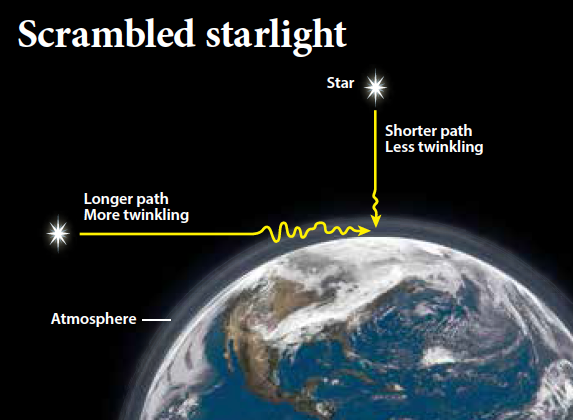A star’s brightness aside, scintillation can actually be a localized effect in a few cases. First, stars close to the horizon twinkle more because their light must travel through more air to reach your eye. As they rise and the light travels through progressively less air, the effect lessens, and stars at the zenith (the overhead point) are affected least.
Second, localized atmospheric disturbances can be created as heat dissipates from warm areas of the ground; looking at the sky in the direction of a concrete building or asphalt parking lot may cause stars in that direction to twinkle more, while stars in other parts of the sky might appear more stable.
Finally, because the amount of scintillation depends so much on what the atmosphere is doing at any particular moment, differences in wind speed, humidity, temperature, and other factors from day to day can affect how much stars twinkle on different nights.
Alison Klesman
Associate Editor










